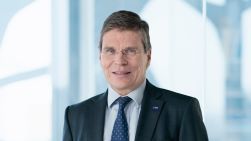It will be the largest offshore wind farm in the world with 140 wind turbines, producing first electricity in 2022.

Global chemical giant BASF signed a €300 million contract with European energy company, Vattenfall for the purchase of 49.5% of latter’s wind farm, Hollandse Kust Zuid in June 2021. The company’s total commitment amounts to around €1.6 billion including BASF's contribution to fund the wind farm construction.
Hans-Ulrich Engel, Chief Financial Officer, BASF is hopeful that the wind farm will become fully operational in 2023. “With first electricity produced already in 2022, it will be the largest offshore wind farm in the world. It will have 140 wind turbines and a total installed capacity of 1.5 gigawatts. It will also be the first offshore wind farm without public subsidies for the power produced."
BASF is acquiring the electricity from the wind farm for its ownership share through a long-term power purchase agreement. This will enable us to substitute gray power with green power and thus implement innovative, low-emission technologies at several of our production sites in Europe, mainly in Antwerp.
Closing of the transaction is expected in the fourth quarter of 2021, subject to the approval of the relevant authorities, “mentions Hans Engel while sharing an update on recently announced acquisitions.
In May 2021, BASF and Shanshan, a leading Chinese lithium-ion battery material supplier, agreed to form a BASF majority owned joint venture to produce cathode active materials and precursors in China. The purchase price for BASF will be in the mid-triple-digit-million-euro range. Hunan Shanshan Energy operates four production sites for CAM and PCAM in Hunan and Ningxia with an annual capacity of 90 kilotons by 2022.
“By forming the intended joint venture, BASF further strengthens its position in Asia, building up an integrated unique global supply chain for customers in China and worldwide. Through this joint venture, we will increase our annual capacity to 160 kilotons by 2022, with further expansions underway, making BASF the first company with production capacities in all major markets. Closing of the transaction is targeted for later this summer following the approval of the relevant authorities,” explained Engel.
BASF has been successfully working on divestitures. On June 30, it closed the divestiture of its global pigments business to the fine chemical company DIC, following the fulfillment of clearance conditions.
Talking about the BASF’s cash flow development in Q2 2021, Engel says, “Cash flows from operating activities increased by €295 million to €2.5 billion in Q2 2021. The improvement was mainly driven by the considerable increase in net income compared with Q2 2020. This was partly offset by the lower release of funds from changes in net working capital. Cash flows from investing activities amounted to plus €323 million, an improvement of about €1 billion compared with the prior year quarter. This was mainly due to the proceeds from divestitures, particularly the divestment of BASF's pigment business.”
Subscribe to our newsletter & stay updated.